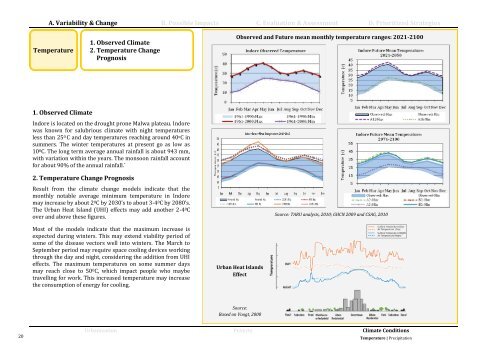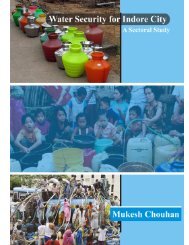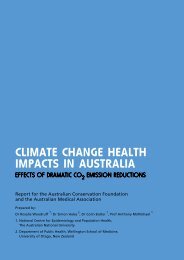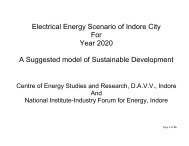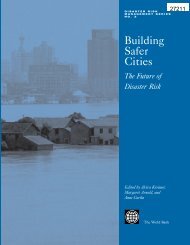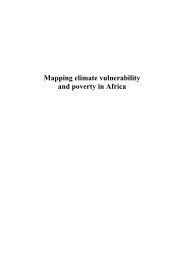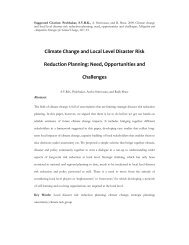Indore City Resilience Strategy - ImagineIndore.org
Indore City Resilience Strategy - ImagineIndore.org
Indore City Resilience Strategy - ImagineIndore.org
You also want an ePaper? Increase the reach of your titles
YUMPU automatically turns print PDFs into web optimized ePapers that Google loves.
A. Variability & Change B. Possible Impacts C. Evaluation & Assessment D. Prioritized Strategies<br />
Temperature<br />
1. Observed Climate<br />
2. Temperature Change<br />
Prognosis<br />
Observed and Future mean monthly temperature ranges: 2021-2100<br />
1. Observed Climate<br />
<strong>Indore</strong> is located on the drought prone Malwa plateau. <strong>Indore</strong><br />
was known for salubrious climate with night temperatures<br />
less than 25 0 C and day temperatures reaching around 40 o C in<br />
summers. The winter temperatures at present go as low as<br />
10 0 C. The long term average annual rainfall is about 943 mm,<br />
with variation within the years. The monsoon rainfall account<br />
for about 90% of the annual rainfall.`<br />
2. Temperature Change Prognosis<br />
Result from the climate change models indicate that the<br />
monthly notable average minimum temperature in <strong>Indore</strong><br />
may increase by about 2 0 C by 2030’s to about 3-4 0 C by 2080’s.<br />
The Urban Heat Island (UHI) effects may add another 2-4 0 C<br />
over and above these figures.<br />
Source: TARU analysis, 2010; GHCN 2009 and CSAG, 2010<br />
Most of the models indicate that the maximum increase is<br />
expected during winters. This may extend viability period of<br />
some of the disease vectors well into winters. The March to<br />
September period may require space cooling devices working<br />
through the day and night, considering the addition from UHI<br />
effects. The maximum temperatures on some summer days<br />
may reach close to 50 0 C, which impact people who maybe<br />
travelling for work. This increased temperature may increase<br />
the consumption of energy for cooling.<br />
Urban Heat Islands<br />
Effect<br />
Source:<br />
Based on Voogt, 2000<br />
20<br />
Urbanization Poverty Climate Conditions<br />
Temperature | Precipitation


